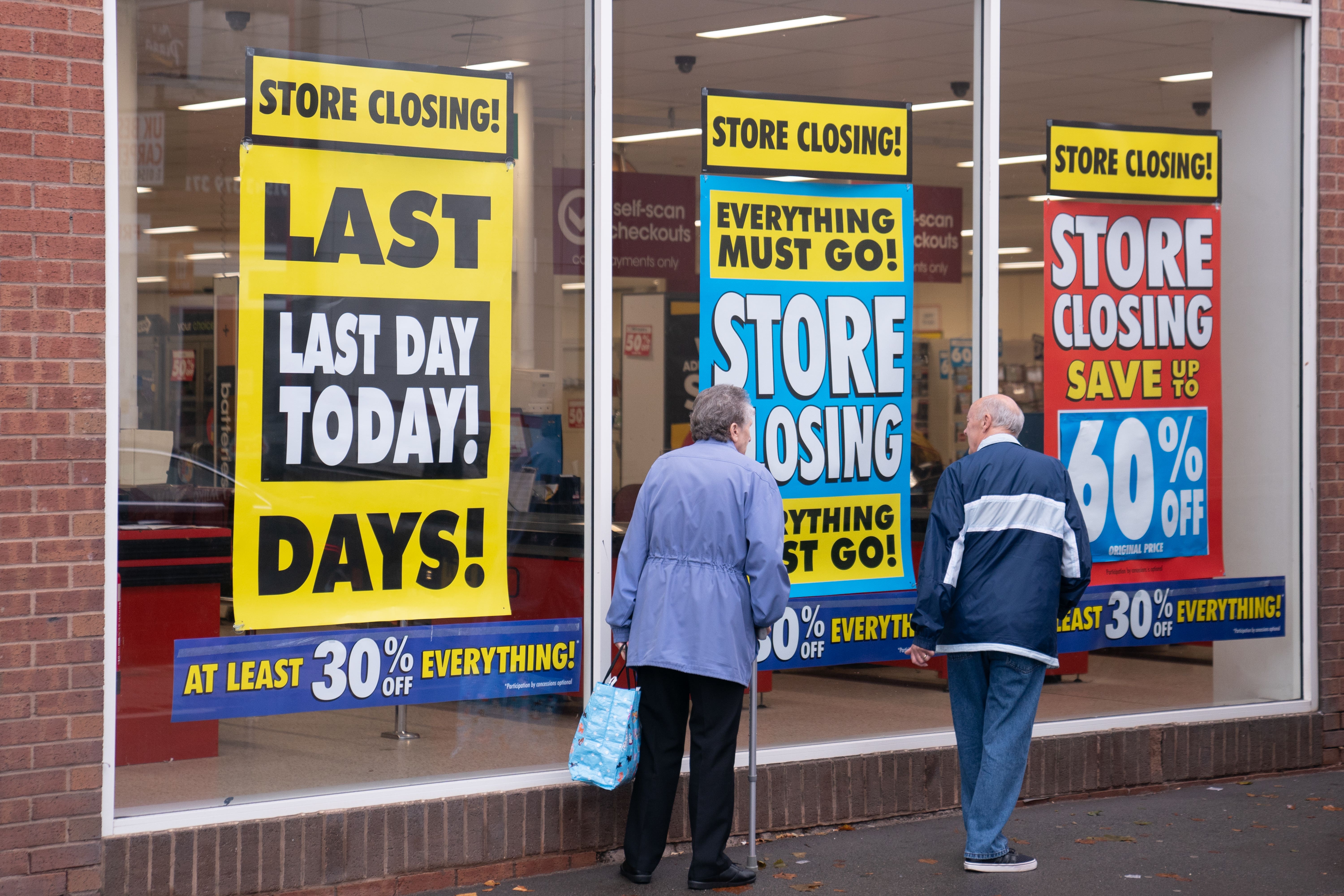Record number of businesses close across the UK – ONS
ONS data shows 345,000 firms across the UK shut their doors in 2022, up 5% on the previous year and the highest figure since records began in 2002.

Your support helps us to tell the story
From reproductive rights to climate change to Big Tech, The Independent is on the ground when the story is developing. Whether it's investigating the financials of Elon Musk's pro-Trump PAC or producing our latest documentary, 'The A Word', which shines a light on the American women fighting for reproductive rights, we know how important it is to parse out the facts from the messaging.
At such a critical moment in US history, we need reporters on the ground. Your donation allows us to keep sending journalists to speak to both sides of the story.
The Independent is trusted by Americans across the entire political spectrum. And unlike many other quality news outlets, we choose not to lock Americans out of our reporting and analysis with paywalls. We believe quality journalism should be available to everyone, paid for by those who can afford it.
Your support makes all the difference.A record number of businesses closed across the UK last year, official figures have shown.
The data from the Office for National Statistics (ONS) also reveals that the so-called business death rate surpassed the “birth rate” of new businesses being founded in 2022 for the first time since 2010.
The figures show 345,000 businesses across the UK shut their doors in 2022 – a 5% increase on the 328,000 that closed in 2021, and the highest figure since records began in 2002.
Meanwhile, 337,000 new businesses began trading nationwide in 2022 – down from 364,000 the year before.
2022 was a difficult year for UK businesses, as they emerged out of the restrictions of the pandemic and straight into the economic fallout from Russia’s invasion of Ukraine
The Institute of Directors (IoD) blamed the increase in business closures on the cost-of-living crisis, the economic fallout of Russia’s invasion of Ukraine, and emerging from the restrictions of the coronavirus pandemic.
In total, there were 2.9 million active businesses in the UK last year. It meant the business “death rate” – the percentage of active businesses that closed – rose to 11.8%.
The “birth rate” fell from 12.4% to 11.5%, meaning last year was the first year since 2010 that more businesses closed than were created.
Roger Barker, director of policy and corporate governance at the IoD, said: “2022 was a difficult year for UK businesses, as they emerged out of the restrictions of the pandemic and straight into the economic fallout from Russia’s invasion of Ukraine.”
Transport and storage businesses particularly struggled, with the highest death rate at 23.8%, almost double any other industry.
Mr Barker blamed “higher business costs and declining disposable income”.
Information and communication businesses had the second highest death rate at 13.6%, while accommodation and food services, and retail industries had the joint-third highest at 12.8%.
However, information and communication also had a higher percentage of high-growth businesses than any other industry.
A high-growth business is defined as a firm where the average annual growth in the number of employees surpasses 20% over a three-year period.
London had the highest birth rate at 12.7%, while the East Midlands had the highest death rate at 13.2%.
But Northern Ireland businesses were the most robust, with just 8.2% closing last year – no other region had a death rate below 10%.
Northern Ireland also had the highest rate of businesses surviving five years at 49%.
George Dibb, head of the Institute for Public Policy Research’s Centre for Economic Justice, said the data was a “potential warning sign for the British economy with more companies going out of business than started up for the first time in 2022 since the tail end of the financial crisis”.
“Whilst this isn’t unexpected – high energy costs combined with the end of pandemic support schemes would always see a rise in company closures – it might signify that greater business support would have maintained higher economic activity.”
He added: “The only regions with above average high-growth firms are London and the South East. If we want to reduce regional economic inequality and ‘level up’, we need to see more of these booming companies in every part of the country.”